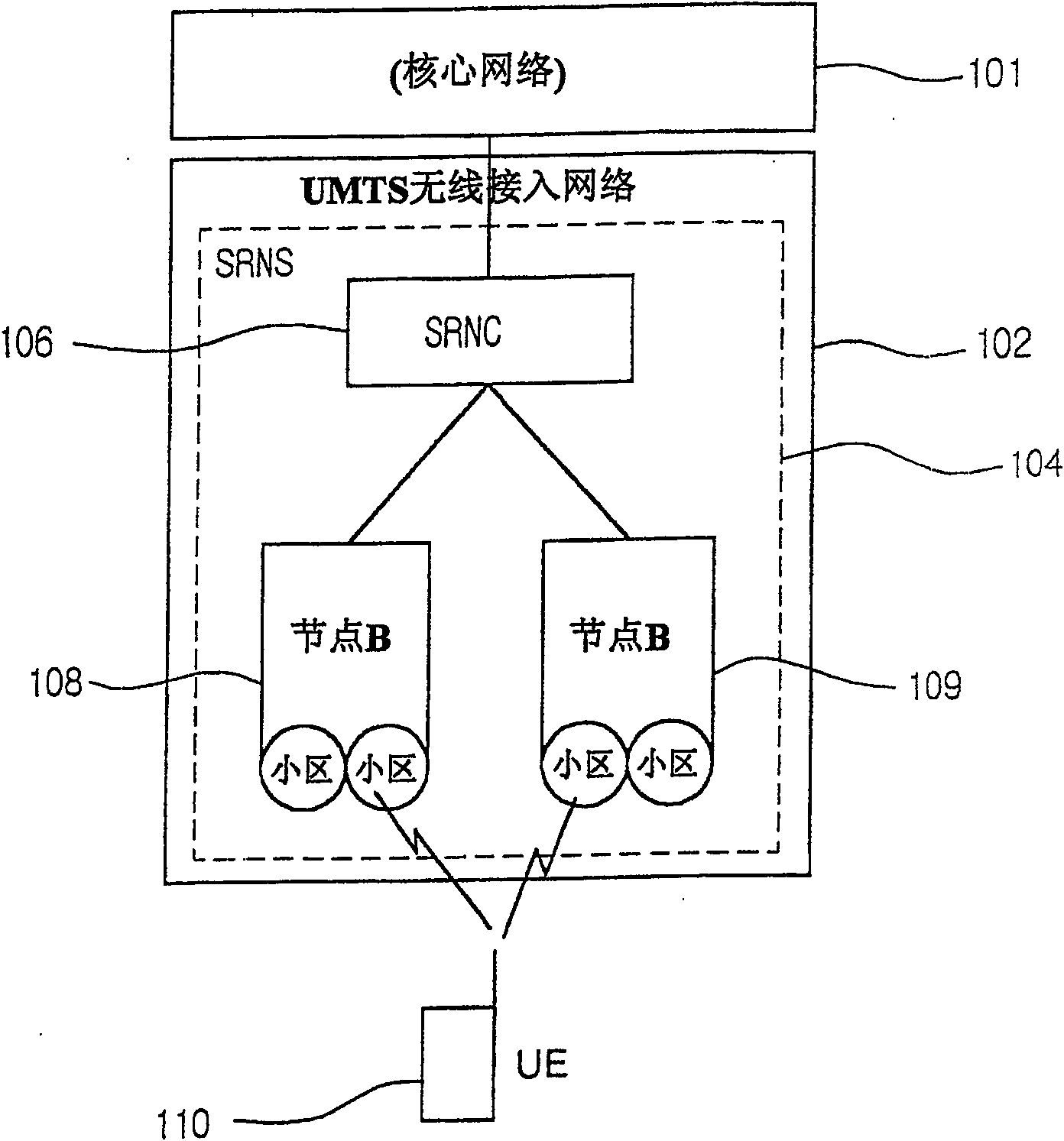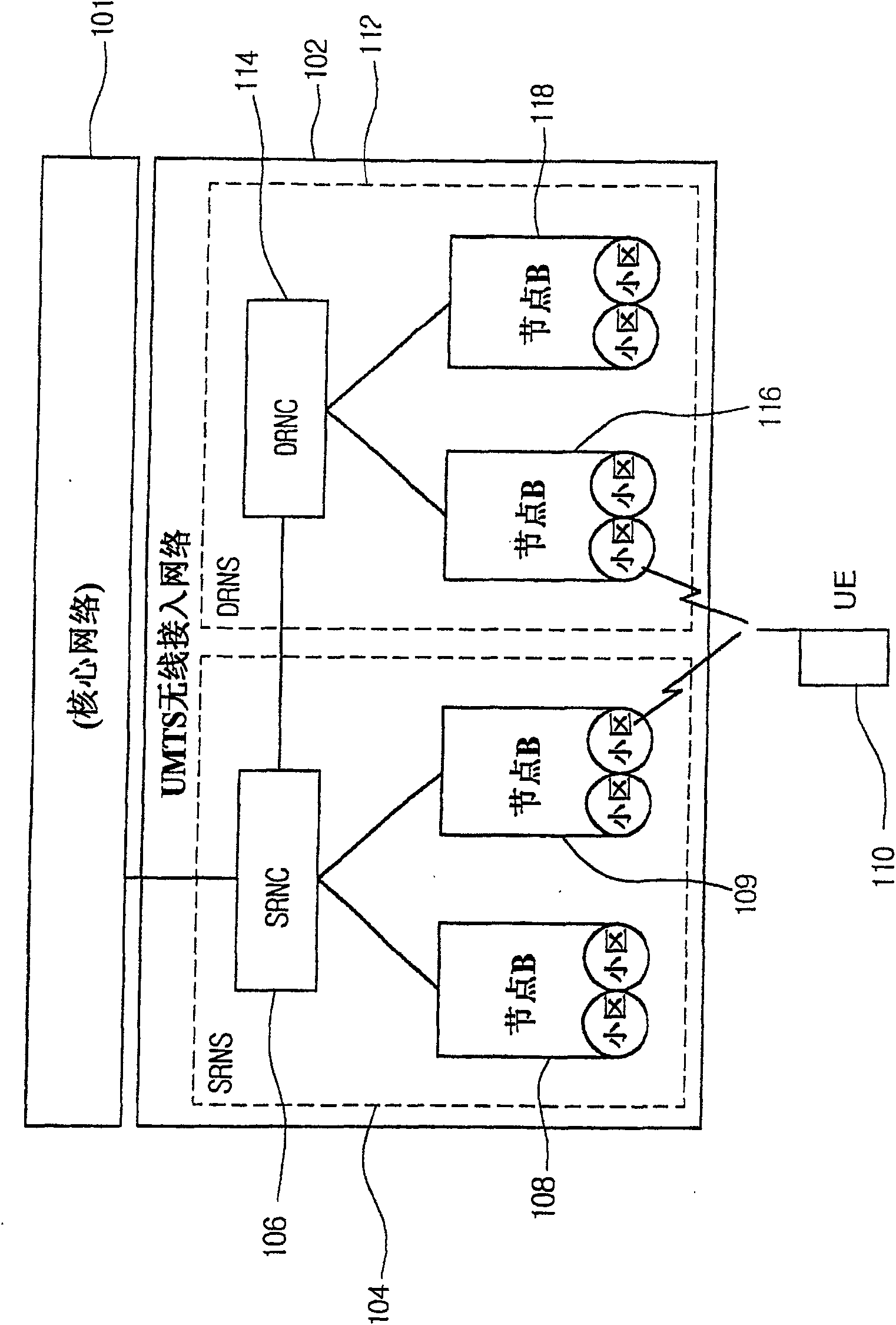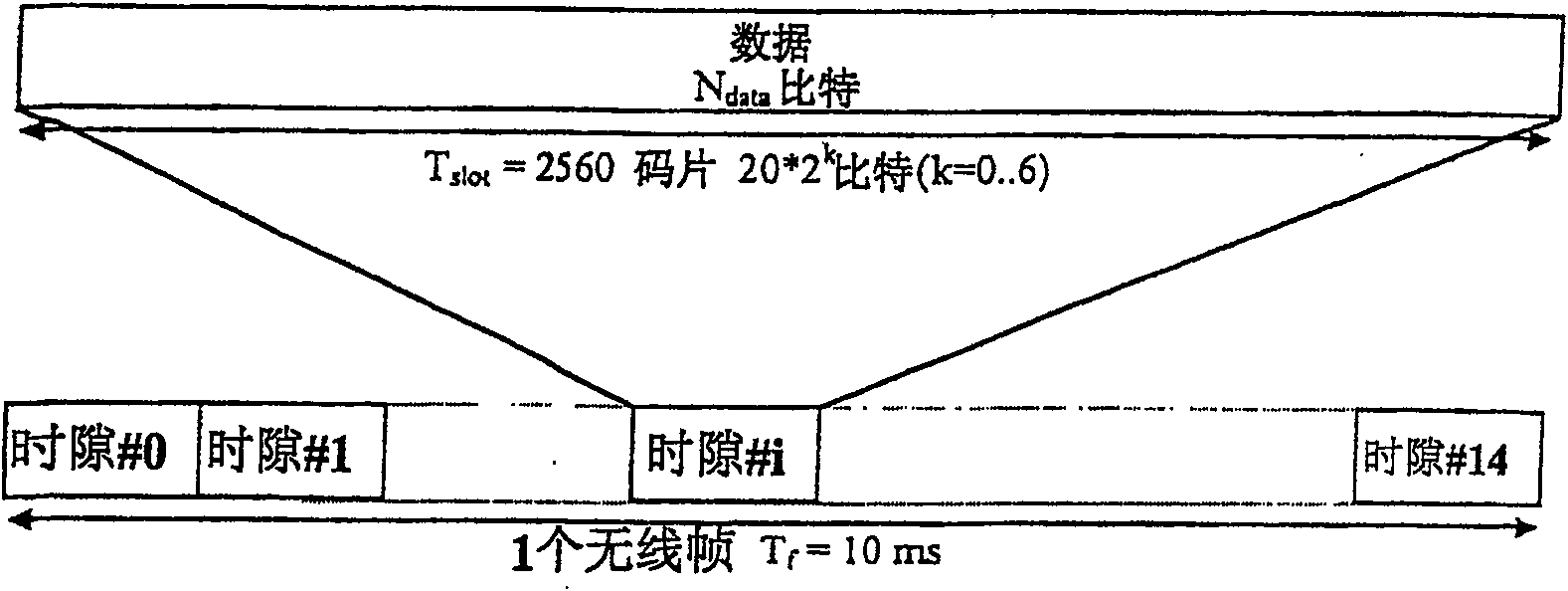Power control method of TFCI field against shared downlink channel
A technique of transport format combination and shared channel, applied in the field of power control of the transport format combination identifier field of the downlink shared channel
- Summary
- Abstract
- Description
- Claims
- Application Information
AI Technical Summary
Problems solved by technology
Method used
Image
Examples
Embodiment 1
[0135] This embodiment relates to the signaling procedure of the TFCI power offset for the DPCCH that transmits TFCI2 when performing a soft handoff between an RNC containing a base station in which a DCH sends a DSCH and another RNC.
[0136] As described in the first method (method-1a), by adding a new field in the user level to carry the TFCI power offset value for sending out the TFCI2 value when the associated DCH soft handover is performed DPCCH, thus forming a new type of control frame. In the case that the normal TFCI power offset value of R99 / R4 should be transmitted after handover, a normal TFCI power offset value can be carried by the corresponding field.
[0137] To carry the TFCI power offset value, as a first procedure, it can be found in Figure 8 A new field for TFCI power control is added to the traditional "radio interface parameter update" frame shown, or another control frame for TFCI power control can be established in DSCH hard split mode as the second p...
Embodiment 2
[0151] This embodiment relates to the signaling process of the TFCI power offset for all DPCCHs which issue TFCI2 according to whether the base station is in the primary or non-primary cell on the basis of SSDT signaling information during handover .
[0152] Figures 17a to 17e are block diagrams illustrating DCH soft handoff and DSCH hard handoff in relation to the DSCH according to the movement of the mobile station.
[0153] Figure 17a shows the situation before the DSCH-related DCH soft handover is performed, and Figure 17b shows the situation during the DSCH-related DCH soft handover between RNCs and before the DSCH hard handover is performed. Fig. 17c shows the situation that RNCs execute DSCH hard handover and DCH soft handover simultaneously. Figure 17d shows the situation of DSCH hard handover between RNCs, and Figure 17e shows the situation after the end of DSCH-related DCH soft handover.
[0154] Figures 18a and 18b show the conventional signaling process in the s...
Embodiment 3
[0165] This involves the signaling process of notifying the TFCI power offset of the DPCCH in the cell. This procedure transmits uplink SSDT information during handover depending on whether the cell is a primary cell or a non-primary cell.
[0166] Referring to Figures 18a and 18b, although a device supporting SSDT is used, the conventional signaling process does not use different signals to notify the TFCI power offset according to whether the base station transmitting the DSCH is the primary base station or the non-primary base station.
[0167] When using the conventional power control scheme, the TFCI power offset information is only transmitted during the radio link establishment in Figures 18a and 18b corresponding to Figures 17a and 17c. Therefore, it is impossible to set an appropriate TFCI power offset when a cell changes from a primary cell to a non-primary cell and vice versa according to a change in radio link status in a conventional process.
[0168] In the firs...
PUM
 Login to View More
Login to View More Abstract
Description
Claims
Application Information
 Login to View More
Login to View More - R&D
- Intellectual Property
- Life Sciences
- Materials
- Tech Scout
- Unparalleled Data Quality
- Higher Quality Content
- 60% Fewer Hallucinations
Browse by: Latest US Patents, China's latest patents, Technical Efficacy Thesaurus, Application Domain, Technology Topic, Popular Technical Reports.
© 2025 PatSnap. All rights reserved.Legal|Privacy policy|Modern Slavery Act Transparency Statement|Sitemap|About US| Contact US: help@patsnap.com



